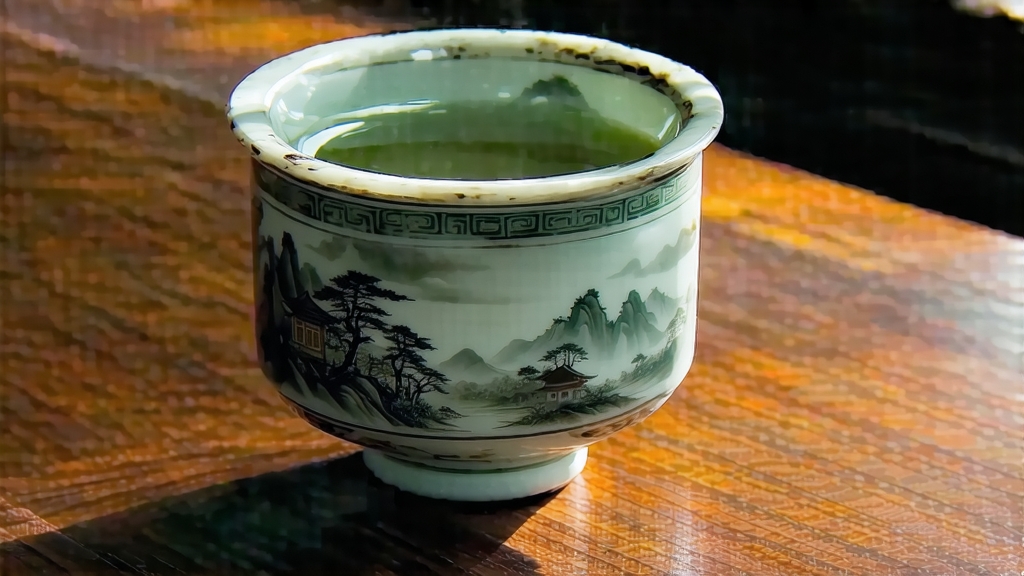
Liu Bao—literally “Six Forts”—is the quiet genius of China’s dark-tea family. While Pu-erh grabs headlines, this cousin from Guangxi province has spent four centuries smoothing its edges in sub-tropical caves, bamboo baskets, and the cargo holds of merchant junks that once sailed the Grand Canal to Southeast Asia. Today the tea is enjoying a renaissance among collectors who prize its camphor-betel complexity and its uncanny ability to taste older than its years without ever slipping into mustiness.
History: From Border Garrison to Maritime Currency
The name Liu Bao refers to a cluster of six Ming-dynasty fortresses built to defend the imperial frontier against Yao uprisings. Soldiers stationed there received compressed tea as part of their rations; the bricks traveled poorly in the humid south, so locals learned to pile-ferment the leaves, rendering them stable for the march home. By the Qing era the same tea had become a commodity on the Tea Road to Malaya, where tin miners drank it to ward off malaria and opium-induced constipation. Chinese coolies bartered it for nutmeg and rubber; British planters paid wages with it. In 1801 the Jiaqing Emperor listed Liu Bao as one of the 24 tribute teas, sealing its reputation across the empire.
Leaf and Place: Micro-terroirs of the Wuzhou Valleys
Modern Liu Bao is still produced in the limestone valleys around Wuzhou City, where the Gui River meets the Xun, creating a natural humidity above 80 %. The cultivar is a medium-leaf Camellia sinensis var. sinensis locally called “Yao Shan Da Ye”—Big Leaf of the Yao Mountains. Spring picking follows the lunar calendar: one bud and the third or fourth leaf, when the leaf’s serrated edge turns slightly yellow-green, indicating a surge in polyphenol oxidase. Farmers call this stage “huang pian,” the yellow slice, prized for its balance of lignin and soluble sugars that feed the microbes waiting in the piling room.
Craft: The Secret of “Water Warming”
Unlike Pu-erh’s wo-dui that lasts 45–60 days, Liu Bao undergoes “shui qing”—water warming—a gentler 25-day microbial waltz. After brief sun-withering the leaves are twisted on bamboo trays, then heaped 70 cm deep in a cement trough lined with jute. Workers sprinkle river water drawn from the Gui at dawn, when dissolved oxygen is highest, and cover the pile with wet gunny sacks. Internal temperature is kept below 55 °C; every 24 h the pile is turned by shovel, aerating the core and re-inoculating surface microbes. On day 12 the mass exudes a sweet, almost coconut-like aroma—sign that Candida krusei and Aspergillus niger have yielded to Bacillus subtilis and A. glaucus. When the leaf turns chestnut-brown and the vein snaps cleanly, the pile is broken and sun-dried on bamboo racks, then steamed and pressed into 40 kg bamboo baskets called “lóng.” These baskets are stacked in riverside warehouses where year-round mist encourages slow secondary fermentation. A decade later the tea will have lost 8 % of its mass to respiration, yet the liquor gains a luminous ruby clarity.
Styles and Ages: A Quartet of Flavors
- New Sheng-style (1–3 years): Woody with raw cacao notes, astringency still clings to the cheeks.
- Mid-aged (5–10 years): Betel nut and camphor dominate; liquor thickens like light soy sauce.
- Lao Cha (15–30 years): Honeyed jujube and damp earth; a cooling sensation creeps up the throat.
- Antique (pre-1990): Whisper of Chinese medicine cabinet—myrrh, star anise, old library leather—yet the finish is brisk and mineral, proof that good Liu Bao never collapses into flat sweetness.
Brewing: The Gongfu of Lingnan Humidity
Water: Spring or filtered, 100 °C for aged leaf, 95 °C for younger.
Vessel: 120 ml Yixing zi-ni (purple clay) teapot seasoned only with Liu Bao, or a gaiwan for comparative tasting.
Leaf ratio: 1 g per 15 ml, rinsed twice to awaken the compressed strata.
Infusions:
1st flash steep 5 s—discard to